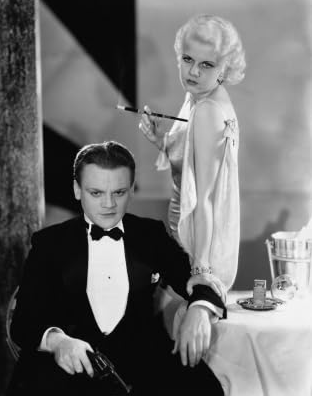
In the annals of cinematic history, few periods spark as much fascination and debate as Pre-Code Hollywood. Lasting roughly from 1929 to 1934, this brief but explosive era saw American films push the boundaries of taste and morality in ways that would be unthinkable just a few years later. Before the iron fist of the Hays Code clamped down, Hollywood was a wild west of risqué dialogue, suggestive situations, and surprisingly frank depictions of social issues, offering a tantalizing glimpse into a less inhibited past.
The Dawn of Sound and the End of Innocence
The advent of synchronized sound in the late 1920s, spearheaded by films like The Jazz Singer (1927), revolutionized the film industry. Suddenly, dialogue became a crucial element, and with it, a new level of realism – and potential for scandal – emerged. Silent films, while often dramatic, relied on visual storytelling and intertitles, which inherently limited their ability to delve into explicit conversations. Sound, however, opened the floodgates to witty, cynical, and often sexually charged banter that reflected the changing social landscape of the Roaring Twenties and the burgeoning Great Depression.
What Made it “Pre-Code”?
The term “Pre-Code” refers to the period before the strict enforcement of the Motion Picture Production Code, commonly known as the Hays Code. While the Code was written in 1930 by Will H. Hays’s office, it was largely ignored by studios eager to capitalize on public demand for more daring entertainment. For four glorious years, Hollywood enjoyed a creative freedom that, in hindsight, seems astonishing.
Films of this era often featured:
- Explicit Sexuality and Adultery: Characters openly discussed and engaged in extramarital affairs, prostitution, and promiscuity. Mae West’s bawdy persona, with lines like “Why don’t you come up sometime and see me?”, became iconic. Films like Red-Headed Woman (1932) and Baby Face (1933) followed ambitious women who used their sexuality to climb the social ladder, often without moral judgment.
- Violence and Crime: Gangsters, murder, and brutal acts were depicted with a surprising degree of realism. Little Caesar (1931) and The Public Enemy (1931) showcased the rise and fall of criminals, often glorifying their lifestyles before their inevitable downfall.
- Drug Use and Alcoholism: While not always central to the plot, drug use and excessive drinking were occasionally portrayed without explicit condemnation.
- Social Commentary and Taboo Topics: Pre-Code films tackled subjects that were considered taboo for decades to come, including abortion (implied in some films), class struggle, homosexuality (often subtly hinted at), and the harsh realities of poverty and unemployment.
- Strong, Independent Women: Unlike the later Hays Code era, which often relegated women to more submissive roles, Pre-Code Hollywood celebrated assertive, often morally ambiguous female characters who were in control of their own destinies and desires. Think of Barbara Stanwyck in Baby Face or Joan Blondell in numerous “gold digger” roles.
- Anti-Hero Protagonists: Many films featured protagonists who were far from virtuous, challenging traditional notions of good and evil. These characters often resonated with audiences grappling with the economic anxieties of the Depression.
Stars Who Defined the Era:
Several actors and actresses rose to prominence during the Pre-Code years, their personas perfectly suited to the era’s liberated spirit:
- Mae West: The undisputed queen of suggestive dialogue and double entendres. Her films like She Done Him Wrong (1933) and I’m No Angel (1933) were massive hits, cementing her as a symbol of Pre-Code audacity.
- Jean Harlow: The “Platinum Blonde” epitomized sensuality and modern womanhood, often playing women who used their looks to get ahead, as seen in Red-Headed Woman.
- Barbara Stanwyck: Known for her strong, independent, and often cynical characters, Stanwyck excelled in Pre-Code dramas like Baby Face.
- James Cagney: His energetic and often violent portrayals of gangsters in films like The Public Enemy captured the era’s fascination with anti-heroes.
- Joan Blondell: Often cast as street-smart, witty women, Blondell embodied the working-class resilience and sass of the time.
The End of an Era: The Enforcement of the Hays Code
The freedom of Pre-Code Hollywood, however, was not to last. Public pressure, particularly from conservative religious groups and the newly formed Catholic Legion of Decency, grew increasingly vocal. They decried the perceived immorality of films, threatening boycotts and advocating for federal censorship.
In July 1934, under immense pressure and facing potential government intervention, Hollywood studios, through the Motion Picture Producers and Distributors of America (MPPDA), finally agreed to strictly enforce the Hays Code. Joseph Breen, a strict Catholic, was appointed to head the Production Code Administration (PCA), and his word became law. The PCA had the power to demand changes, cuts, or even outright bans on films that violated the Code.
The Legacy of Pre-Code Hollywood
The impact of the Hays Code was immediate and profound. Films became significantly sanitized, shying away from controversial topics and embracing a more wholesome, often simplistic, moralistic tone. Adultery became a rarity, violence was toned down, and strong female characters were often relegated to more domestic or supportive roles.
Despite its brevity, Pre-Code Hollywood left an indelible mark on cinema. It demonstrated the power of film to reflect and even challenge societal norms. It also provided a raw, unfiltered look at a specific moment in American history, offering insights into the anxieties, desires, and changing values of the 1930s.
Today, Pre-Code films are celebrated by film historians and enthusiasts for their daring spirit, sharp wit, and surprisingly modern themes. They serve as a vital reminder of a time when Hollywood dared to be truly subversive, pushing boundaries and sparking conversations that continue to resonate to this day. They are not just historical curiosities, but vibrant, engaging works that offer a powerful counter-narrative to the more sanitized cinematic landscape that followed. As we look back, Pre-Code Hollywood stands as a testament to the brief but brilliant period when movies were truly “anything goes.”
